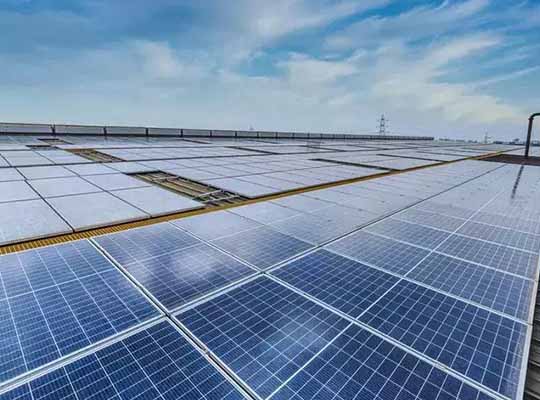A new report from the Institute for Energy Economics and Financial Analysis (IEEFA) tracks key trends at major companies across India’s power sector value chain. It finds the nation is poised to lead the clean energy wave, with investors committing in response to the bold policies that are enabling the transition.
The Indian government’s bold policies and reforms to enable the clean energy wave are paying off, as major players are announcing business plans, according to a new report by the Institute for Energy Economics and Financial Analysis (IEEFA).
“With rampant imported fossil fuel inflation, energy security is a key national priority,” says report author Shantanu Srivastava, an energy finance analyst at IEEFA. “India is tackling climate change through ambitious domestic clean energy targets and bold policies and reforms to support them.”
Some of the “big bang” policies include the green hydrogen and green ammonia policy, production-linked incentive (PLI) schemes for solar modules and batteries, and market-based economic dispatch to democratize the electricity markets. Other initiatives include general network access and green energy corridor schemes encouraging investment in the grid sector, as well as private ownership through the National Monetization Pipeline and the privatization of distribution companies (discoms).
Key trends
Domestic and international players across the power sector are rapidly scaling up renewable infrastructure capacity in India and are preparing for the next wave of sectoral reforms, states the report. Key trends among large power sector companies include diversifying across the value chain, leapfrogging the competition to adopt zero-emissions technologies, and value-added products and services such as peak power supply, round-the-clock supply, and corporate decarbonization solutions.
Companies are betting on rapidly falling costs of green hydrogen production to exploit its use in energy storage, mobility, fertilizers, refining, and industry. They are also moving into the manufacturing of electrolyzers. Reliance Industries and Adani Group aim to produce green hydrogen at or below the cost of its fossil fuel counterpart, states the report.
In energy storage, companies are betting on pumped hydro, virtual power plants, demand response management, and battery storage to provide dispatchable and controllable renewables and grid reliability.
Players have participated in the government’s PLI scheme for solar manufacturing, while also acquiring stakes in state discom businesses – integrating the last link of the power sector value chain. One example is private-sector integrated utility Tata Power, which recently acquired the Odisha discom.
In transmission, operators such as IndiGrid InvIT (infrastructure investment trust) and Adani Transmission have been vying for both greenfield and brownfield assets, as government agencies look to evacuate the large renewables generation capacity planned in the country. As power markets become more democratized and integrated, companies see opportunities in power trading through exchanges and contracting with customers through open access and merchant capacities.
Several industry players have diversified from commoditized electricity generation, distribution, and transmission to providing value-added products such as peak power supply, round-the-clock supply and corporate decarbonization solutions, which fetch higher margins and offer growth prospects in a fast-evolving energy economy.
“For India to accelerate its transition path,” Srivastava says, “it is imperative to build momentum in clean energy investments through such policies and corporate actions. This, in turn, depends on clarity and integrity on the policy front and the availability of cost-effective, long-term financing to fuel the ambitious long-dated infrastructure plans of industry players.”













